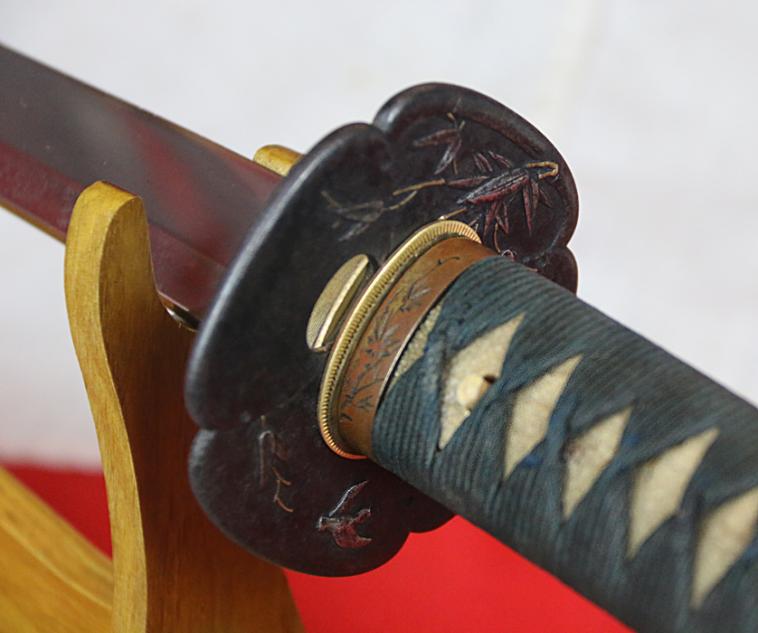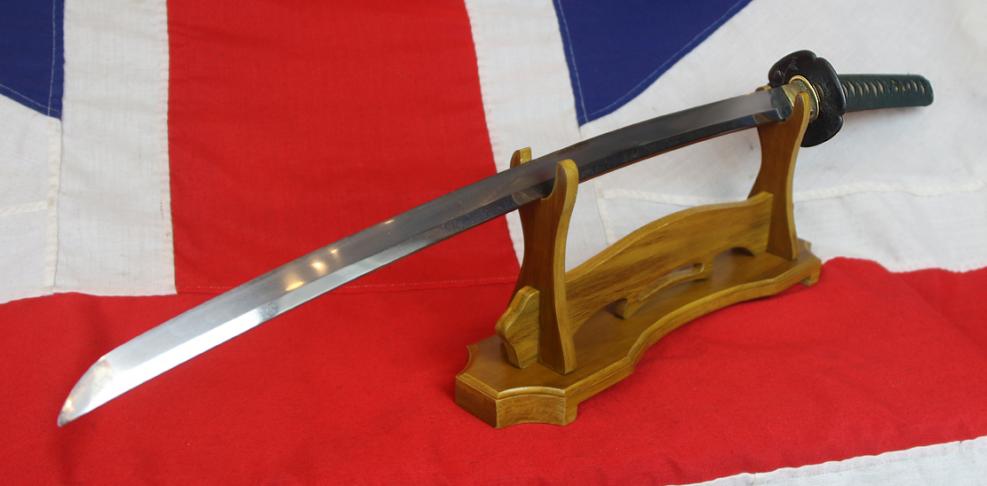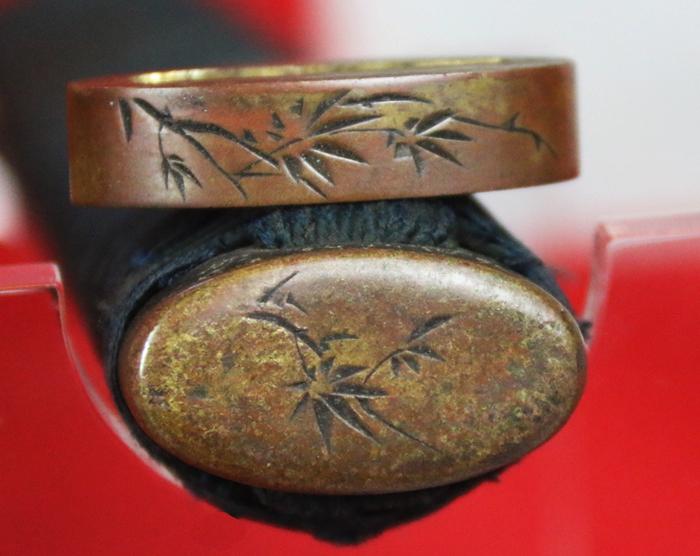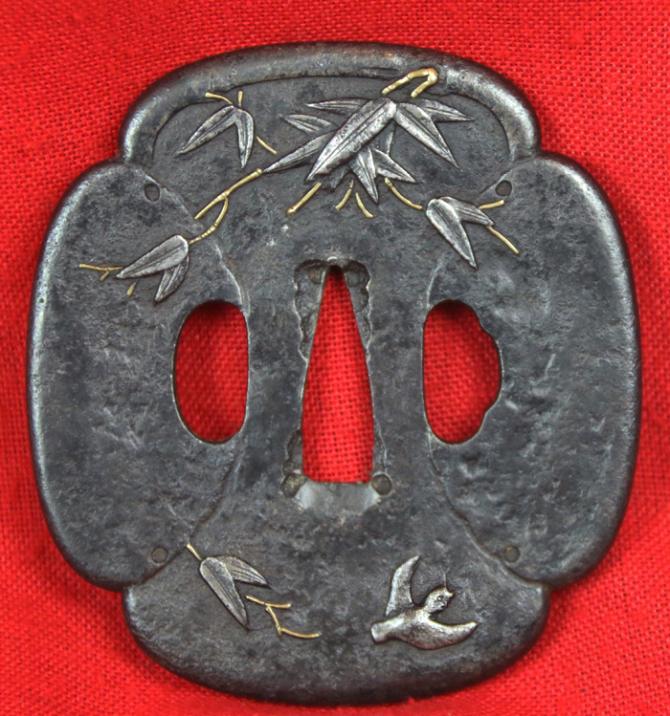!!!!Save An Incredible £4000 & Well Below Cost!! A Beautiful Untouched Ancient Sengoku Period Long Sword, A Koto Period Katana Around 500 Years Old with All Original Edo Period Mounts & Fittings
As our regulars know we do this now and again, but as a special thank you to all our regulars, as a space clearing special offer.
A most impressive and beautiful sword, a fine statement piece of any collection of oriental art. A sword mounted in wonderful original Edo period koshirae, all decorated on the theme of bamboo. Patinated copper fuchikashira carved with bamboo leaves, large iron plate tsuba with bamboo and birds, and bamboo form menuki under the green/blue silk wrap over giant rayskin. The original Edo saya is subtly decorated with incredible skill and detail with wonderful, dark, scrolling and crushed Abilene shell. Long powerful blade, with Edo period polish showing natural wear. For centuries, if not millennia, bamboo has permeated everyday Japanese life, figured in some of the country’s best-known literature and become a staple of its art, as both motif and material. Its propensity to bend yet endure makes it a cultural symbol. In both Japan and China, an ink painting of a tiger in a grove of bamboo signifies social harmony and, it would seem, political savvy, as this wily animal is among the few able to navigate the dense bamboo forest. Bamboo contains multitudes. Perhaps nowhere more than in Japan, home to over 600 species of this amazing plant, officially a subfamily of grasses but blessed with a woody stem and the ability to lift well above its weight. Japan’s ubiquitous bamboo is unsurprisingly storied. Woven artifacts evidence from the later Jomon Period (10,000-200 B.C.). The ancient nation- and culture-building texts, the “Kojiki” (Records of Ancient Matters) and “Nihon Shoki” (“The Chronicles of Japan”), record bamboo knives and combs with magical powers. The oldest surviving baskets are 8th-century offering trays kept in the Shosoin treasure house in Nara. Bamboo was obviously crucial to the 10th-century prose narrative “Taketori Monogatari” (“Tale of the Bamboo Cutter”). Tea masters of the 15th century revered seemingly artless utensils in their burgeoning spiritual practice. Emperors were gifted the choicest of bamboo wares. The Sengoku period [ Sengoku Jidai, "Warring States period") is a period in Japanese history of near-constant civil war, social upheaval, and intrigue from 1467 to 1615.
The Sengoku period was initiated by the Ōnin War in 1467 which collapsed the feudal system of Japan under the Ashikaga Shogunate. Various samurai warlords and clans fought for control over Japan in the power vacuum, while the Ikkō-ikki emerged to fight against samurai rule. The arrival of Europeans in 1543 introduced the arquebus into Japanese warfare, and Japan ended its status as a tributary state of China in 1549. Oda Nobunaga dissolved the Ashikaga Shogunate in 1573 and launched a war of political unification by force, including the Ishiyama Hongan-ji War, until his death in the Honnō-ji Incident in 1582. Nobunaga's successor Toyotomi Hideyoshi completed his campaign to unify Japan and consolidated his rule with numerous influential reforms. Hideyoshi launched the Japanese invasions of Korea in 1592, but their eventual failure damaged his prestige before his death in 1598. Tokugawa Ieyasu displaced Hideyoshi's young son and successor Toyotomi Hideyori at the Battle of Sekigahara in 1600 and re-established the feudal system under the Tokugawa Shogunate. The Sengoku period ended when Toyotomi loyalists were defeated at the siege of Osaka in 1615.
Overall length in saya 37.5 inches long, when the sword is withdrawn from saya it is 35.25 inches long overall
The Sengoku period was named by Japanese historians after the similar but otherwise unrelated Warring States period of China.
With a special price offer it is not available for layaway, px or other types of discount
Code: 23941










